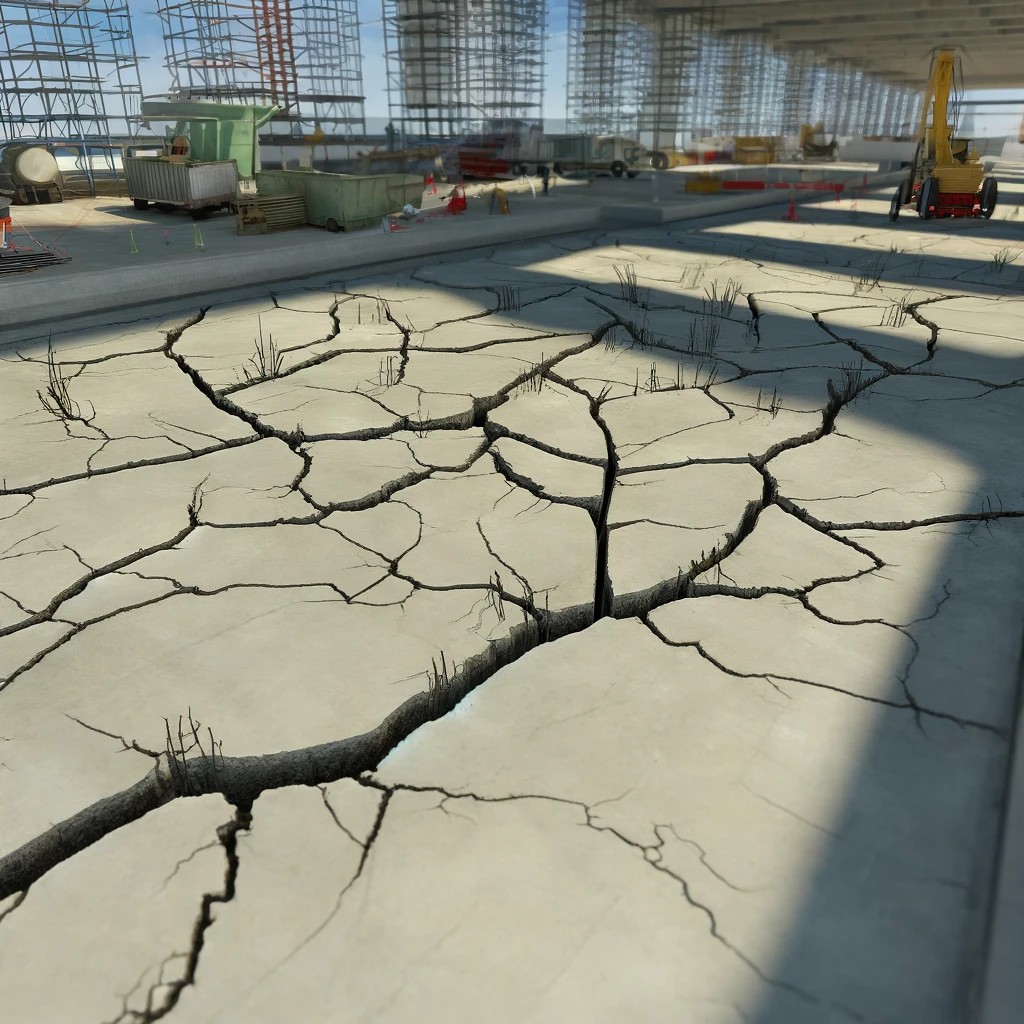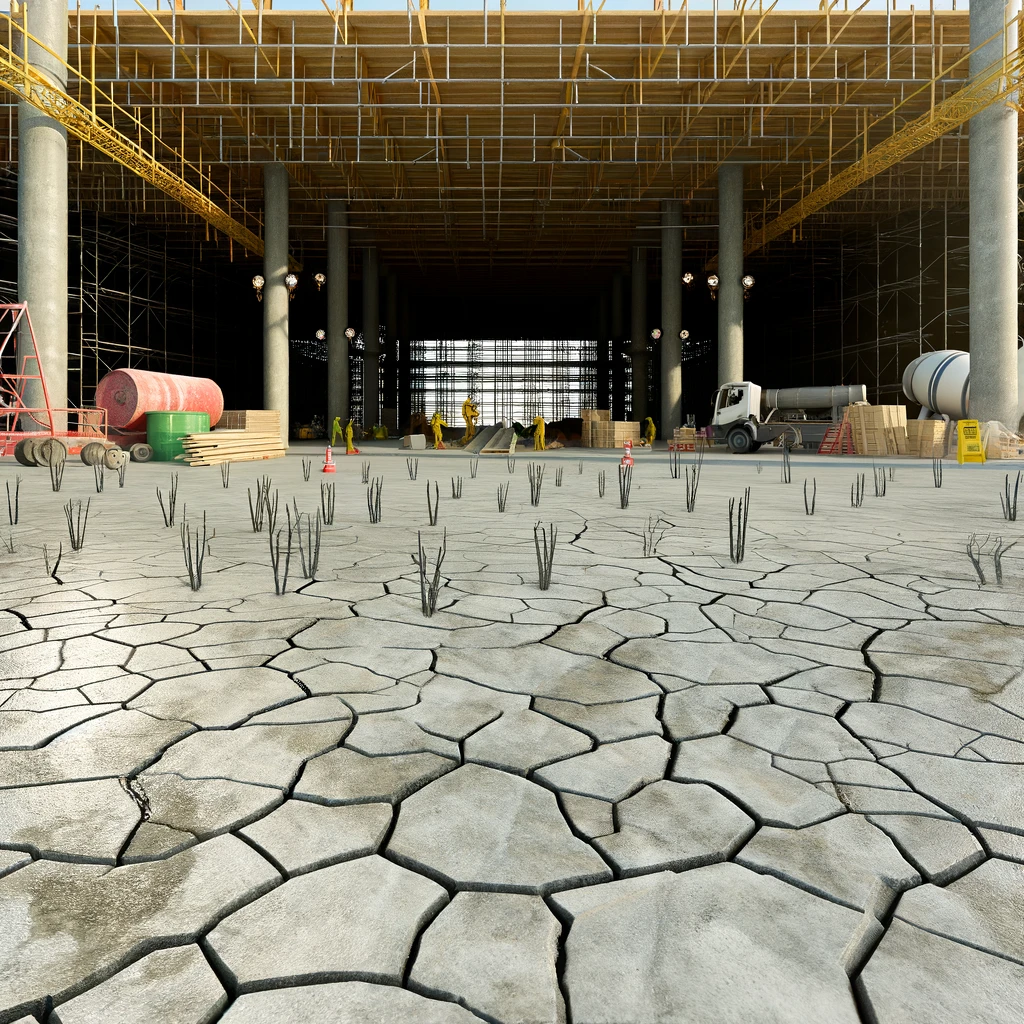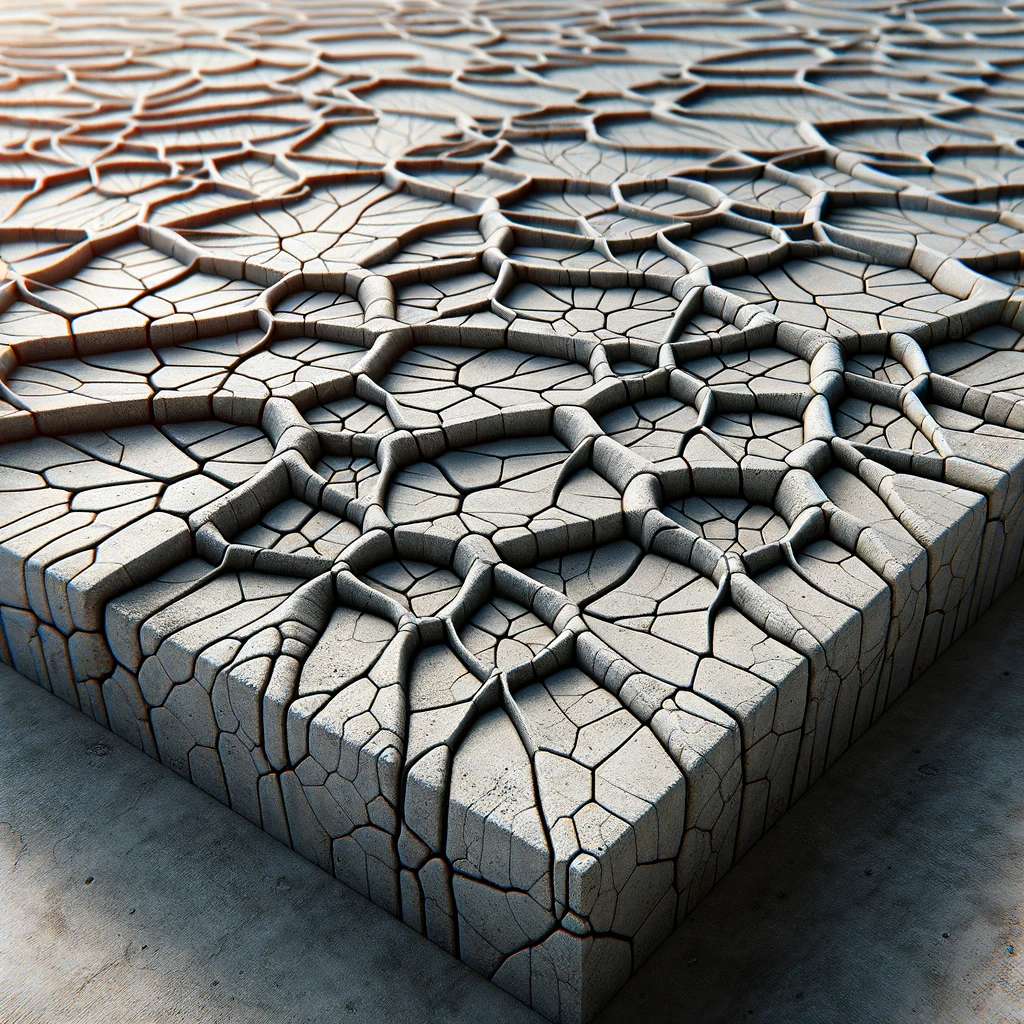An Exploration of Pattern Cracking in Construction
In the world of construction, pattern cracking is a frequent issue.
It directly influences the durability and lifespan of projects.
Why does it happen? How can we avoid it?
We’re here to shed some light.

Table of Contents
An in-depth look at Pattern Cracking in Construction
Pattern cracking is a common issue that construction projects encounter regularly. It directly affects the durability and lifespan of a building. As a result, understanding the cause, prevention, and treatment of pattern cracking is key to ensuring a project’s longevity.
What is Pattern Cracking?
Pattern cracking refers to a network of cracks forming interconnected patterns on concrete surfaces.
These appear due to temperature changes, inappropriate concrete mix, or curing processes that may lead to a decrease in the overall lifespan of a construction project.
Effects of Pattern Cracking on the Lifespan of a Construction Project
So how does pattern cracking affect a project’s overall lifespan? Let’s break it down.
- Damages Structural Integrity: Pattern cracking infringes on a building’s structural integrity, thereby reducing its overall strength and stability.
- Water Seepage: Pattern cracks open avenues for water to seep into the concrete, leading to further deterioration of the structure.
- Potential for Larger Cracks: Over time, untreated pattern cracks have the potential to lead to larger and more dangerous cracks within the concrete.
Preventing Pattern Cracking
There are several approaches to managing and preventing pattern cracking. By staying vigilant and adopting these preventive methods, we can prolong a construction project’s lifespan significantly.
- Proper Concrete Mix: Using the correct ratio of water and cement in the concrete mix can help.
- Controlled Curing Process: Implementing controlled curing methods ensures gradual and uniform drying.
- Use of Contraction Joints: These are planned cracks which allow concrete to crack in a controlled manner.
Effect of Pattern Cracking on Costs
Pattern cracks aren’t just a structural problem; they are a financial one. They increase the costs of maintenance and repair, thereby influencing the overall budget of a project. Therefore, preventing pattern cracks can lead to significant cost savings in the long run.
Remedies for Pattern Cracking
If a construction project already exhibits pattern cracking, there are methods to treat and control its spread. Remedies like crack filling and sealants can mitigate further damage, but care should be taken to address the root causes and prevent recurring issues.
Pattern cracking can greatly impact the overall lifespan of a construction project. Therefore, knowing Causes, effects, prevention and remedies of pattern cracking is instrumental in maintaining the longevity and cost-efficiency of construction projects.
With correct preventive and mitigative measures, we can ensure the long-lasting success of our construction endeavors.

Preventive Measures Against Pattern Cracking
The Role of Substandard Workmanship and Materials
If the construction procedures are not followed accurately or low-quality materials are used, it leads to weaknesses in the structure that can result in pattern cracking.
The Impact of Environmental Conditions
Factors such as temperature fluctuations, humidity, and exposure to harsh weather conditions can cause construction materials to expand and contract, causing these distinctive cracks.
Preventive Measures Against Pattern Cracking
Cracks not only disfigure the aesthetics of buildings or structures but also affect their durability. To prevent this, follow the ensuing methods:
- Appropriate Material Selection: Always use top-notch materials that meet the strength and flexibility needs of your specific construction project.
- Professional Workmanship: Ensure that construction procedures are followed accurately, without rushing or skipping essential steps.
- Consider Weather Conditions: Plan construction timelines wisely, considering potential weather impacts, especially temperature variations.
- Proper Finishing: Make sure the finishing work is done correctly, as poor finishing often leads to pattern cracking.
Regular Inspection and Maintenance
Finally, one cannot underestimate the importance of regular inspection and maintenance. Vigilant monitoring can identify any early signs of pattern cracking and help implement preventive measures on time.
In summary, while pattern cracking is common in construction works, it is not an unavoidable issue. By choosing proper materials, employing professional workmanship, considering environmental impacts, and following regular inspection and maintenance routines, you can keep your construction project free from pattern cracking.
References
To learn more about pattern cracking and preventive measures, visit:
- Construction terms and their meanings from Reference.com
- Construction Education: Understand and Prevent Cracks in Buildings – ConstructionEd.com

Is Pattern Cracking a Sign of Foundation Problems?
Whether you’re a homeowner, a building expert, or simply interested in the construction industry, understanding the implications of pattern cracking is crucial. While it might seem like an innocent crack on the wall or floor, it could actually be an early sign of potentially serious foundation problems.
The Basics: Understanding Pattern Cracking
First things first, let’s define the term. Pattern cracking is a type of crack that forms on a structure’s surface in a repeating pattern. This often forms where walls or floors intersect or where materials change.
Common Types of Pattern Cracking
The following are a few common types of pattern cracking:
- Stairstep cracks: These typically appear on brick walls and resemble the steps of a staircase
- Vertical wall cracks: These are commonly straight line cracks running from the top to the bottom of a wall
- Horizontal wall cracks: Usually found in the middle or lower half of the wall
Cracking the Code: The Foundation Problem Connection
Pattern cracking can indeed be a sign of foundation problems. These problems can occur because of a myriad of reasons including soil movement, incorrect construction methods, and aging, among others.
The Role of Soil Movement
Soil movement is one of the major causes of foundation problems, thus leading to pattern cracking. If the ground beneath the foundation shifts due to changes in weather and moisture levels, it can cause the foundation to shift and crack.
Aging, Incorrect Construction, and Other Causes
Structural problems could also occur due to construction errors such as inadequate soil preparation or using poor-quality building materials. Similarly, aging of a structure over the years can lead to materials becoming brittle and less able to bear the load, ultimately causing cracks.
Decoding Crack Patterns: Know When It’s Serious
Not all cracks indicate a serious problem. It’s important to recognize when a crack is just a superficial issue or a sign of a larger problem.
- If your cracks are wide at the top and narrow at the bottom, or vice versa, it could mean your foundation is shifting unevenly.
- If you see horizontal cracks, especially near the base of a wall, it may indicate a pressure buildup on your foundation.
- If you see diagonal cracks, particularly wider than 1/8 inch, it may be an indication of issues related to soil settling.
The damages resulting from serious foundation issues can be extensive, so remember to consult a professional if you notice any unusual or advancing cracks in your structure.
Protect & Fix: What Happens Next?
If you detect pattern cracking that signals a foundation problem, it’s vital to act fast. Call a professional to assess the problem and suggest a solution, such as underpinning or reinforcement.
This investigation will likely involve visually inspecting the affected area, conducting a report, and working on a repair strategy. Your foundation’s health is not something you should try to diagnose alone. With the help of seasoned professionals, you can ensure your home stays standing strong for many years to come.
To sum it up, pattern cracking can be a telltale sign of foundation problems. Educating yourself on this matter can help protect your investment (your property) and ensure the structure’s longevity.

Putting An End To Pattern Cracking
We’ve found that pattern cracking is far from just a cosmetic issue, posing significant structural and fiscal threats to construction projects.
From our perspective, it is essential to understand and address the causes of pattern cracks, with temperature fluctuations and misguided concrete mixes being notable contributors.
Given the damage pattern cracking can wreak on a structure’s integrity and the prevalence of water seepage, determining measures to prevent such occurrences is critical.
In our experience, actions such as optimizing the concrete mix, controlling the curing process, and implementing contraction joints have shown remarkable efficacy.
Should pattern cracking already be present, it’s vital to not only treat these cracks, but also to tackle the root causes to prevent recurrence. Summarily, if we’re proactive in our preventive and mitigation strategies, we can maintain our project’s longevity, structural integrity, and financial viability.






